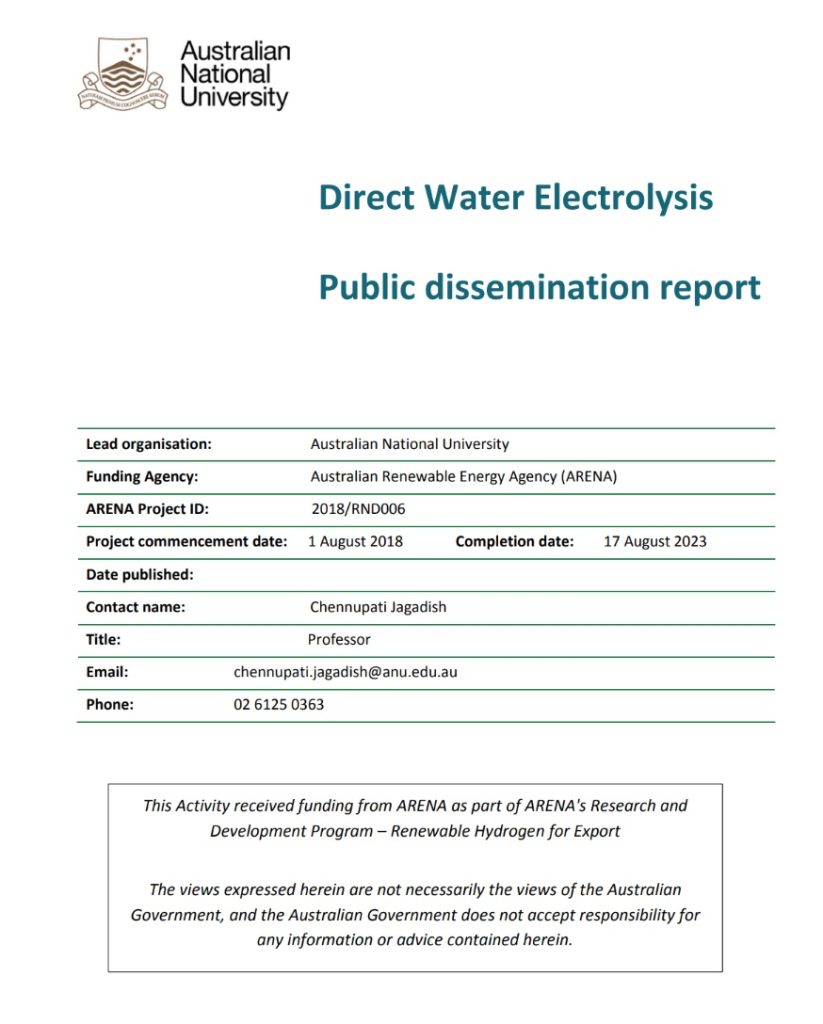This report details the development of a Direct Solar Hydrogen photoelectrochemical (PEC) system, using solar water-splitting to produce hydrogen. As part of the project, the group successfully developed a prototype with a 20% solar to hydrogen efficiency. This report covers the progress of the project, highlighting technical results, insights, key learnings and commercialisation prospects of the technology.
Report extract
 Current green hydrogen production approaches, connecting renewable power plants to electrolyser facilities, grapple with low conversion efficiencies and high production costs, limiting broad adoption. Direct solar hydrogen photoelectrochemical (PEC) systems, that combine photovoltaic and electrocatalytic elements into a single system, aim to combat this by bypassing energy conversion
Current green hydrogen production approaches, connecting renewable power plants to electrolyser facilities, grapple with low conversion efficiencies and high production costs, limiting broad adoption. Direct solar hydrogen photoelectrochemical (PEC) systems, that combine photovoltaic and electrocatalytic elements into a single system, aim to combat this by bypassing energy conversion
stages and reducing balance of system requirements.
The aim of this project was to develop solutions to the challenges that hinder the potential of III-V semiconductors for PEC hydrogen generation, namely their high cost and poor stability. Despite enabling record energy conversion efficiencies, III-V-based PEC systems indeed typically involve sophisticated growth techniques, expensive co-catalyst materials and short lifetimes. Overcoming these challenges is crucial to promote the commercial prospects of solar hydrogen systems, which have been identified as a key element to the energy transition.



